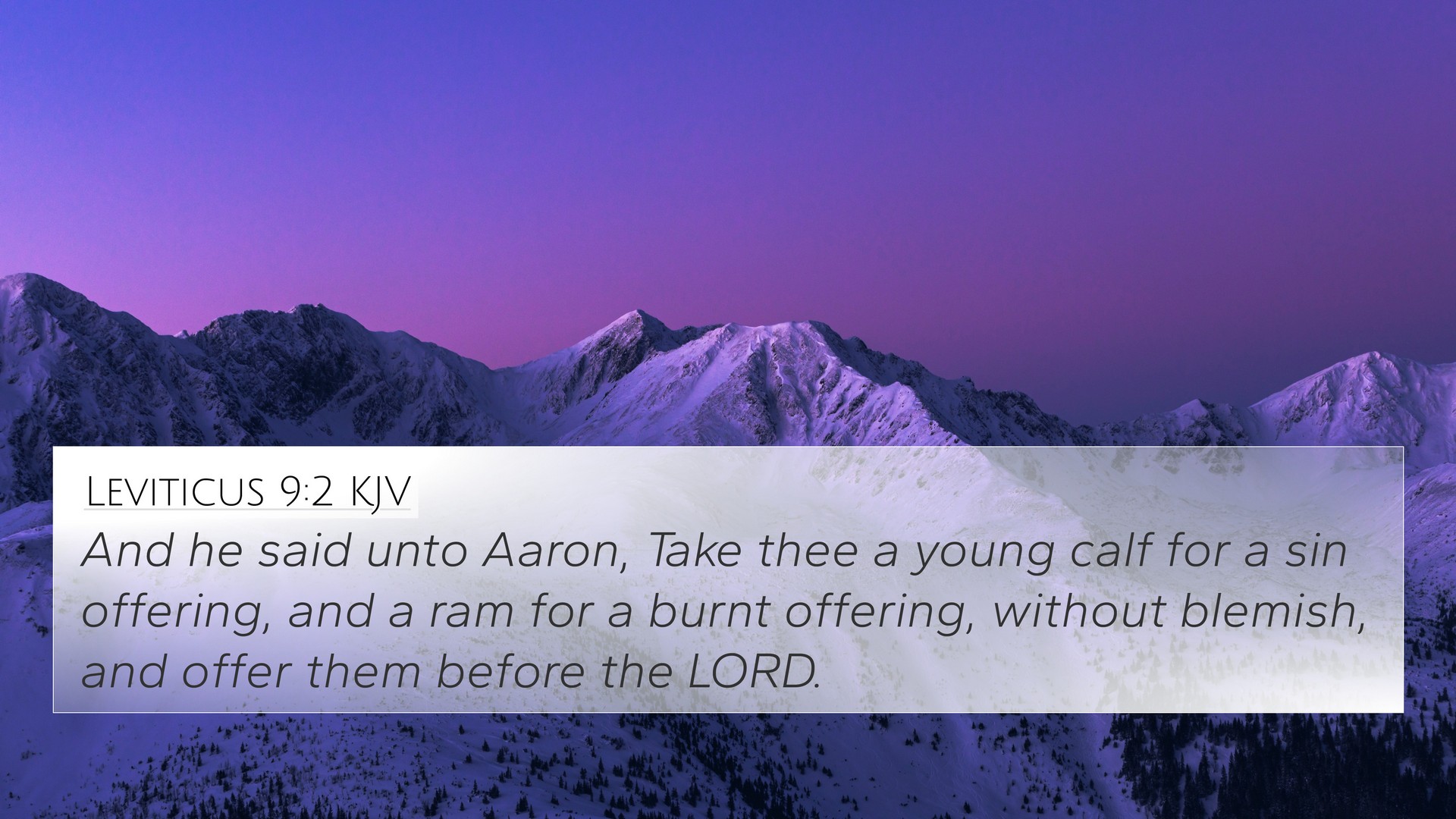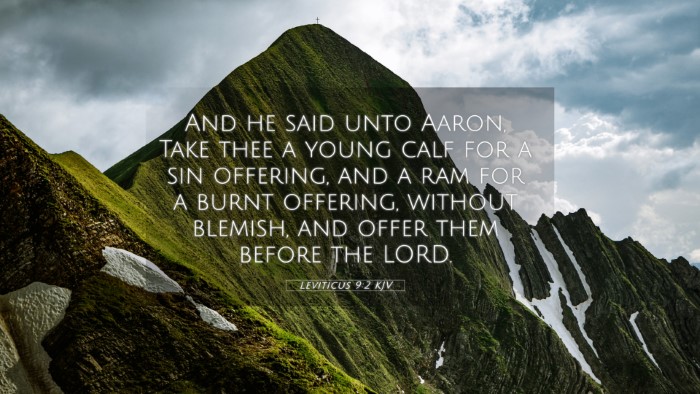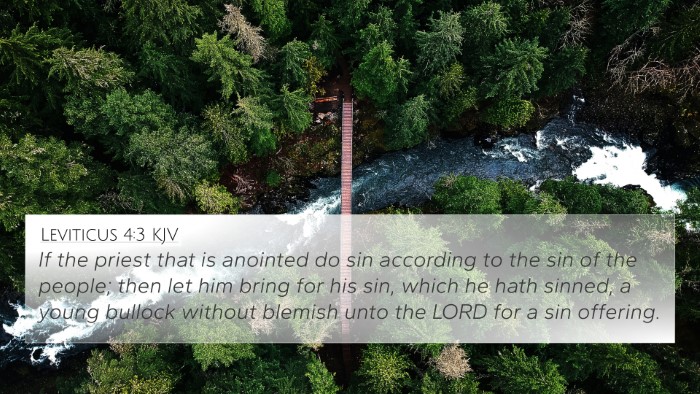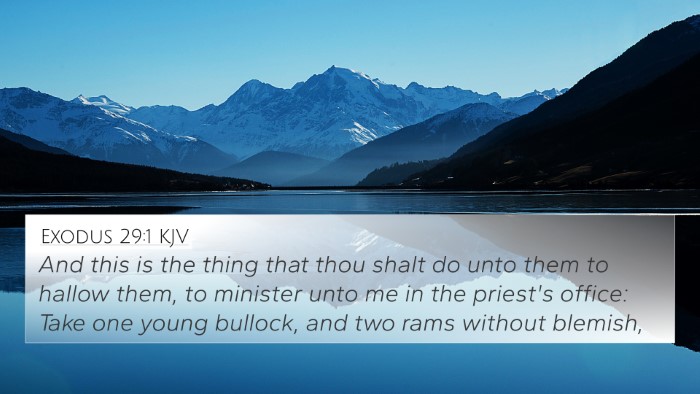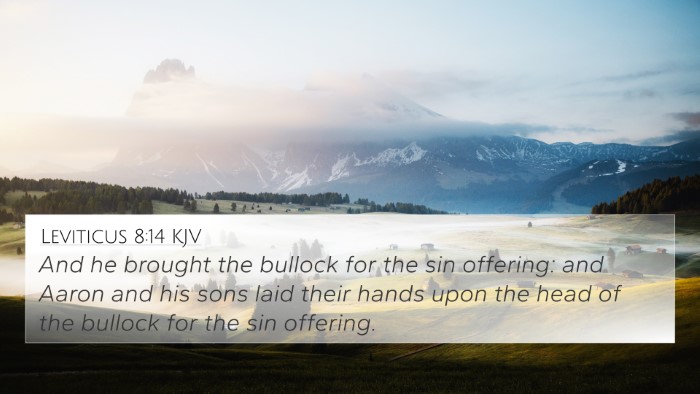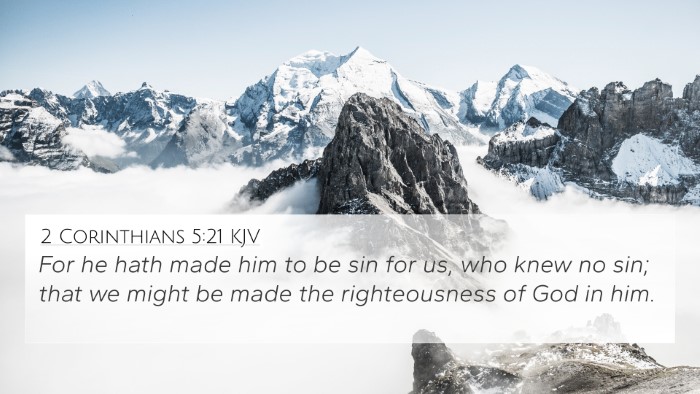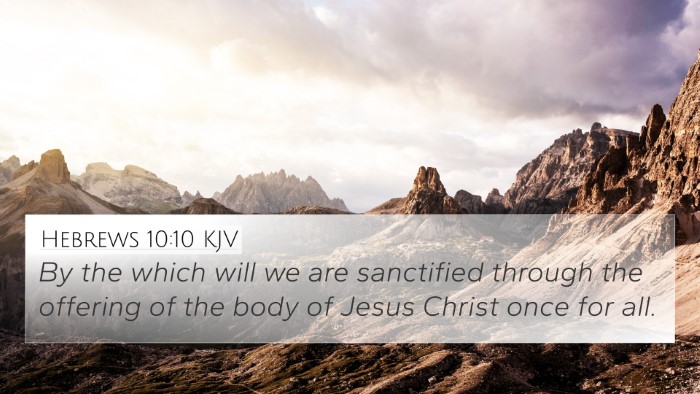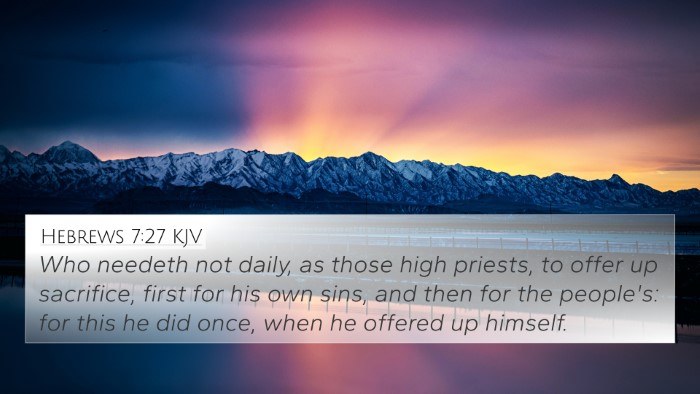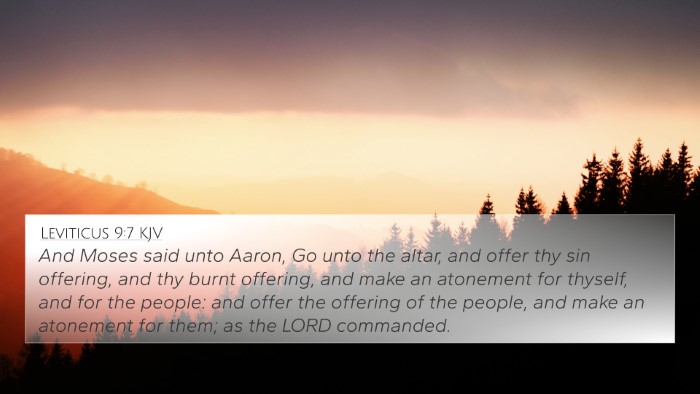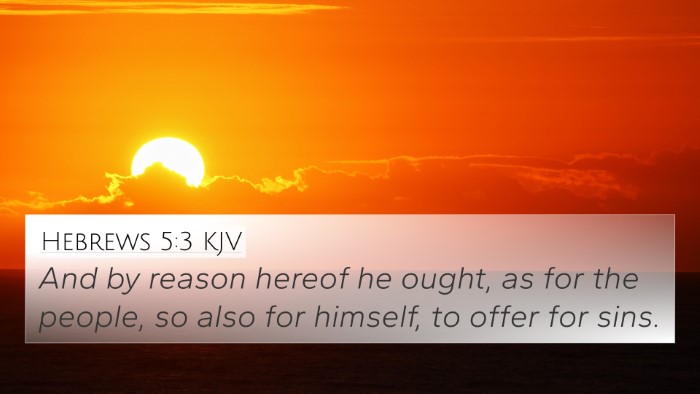Understanding Leviticus 9:2
Verse: "And he said unto Aaron, Take thee a young calf for a sin offering, and a ram for a burnt offering, without blemish, and offer them before the Lord."
The verse represents a significant moment in the establishment of the priestly duties and the system of sacrifices in the Old Testament. This instruction comes as part of the consecration of Aaron and his sons as priests, marking their initial responsibilities before God.
Contextual Significance
This directive highlights the importance of purity and sacrifice in worship. Under the Mosaic Law, offerings were central to maintaining a proper relationship with God. The choice of a "young calf" and a "ram without blemish" conveys both the seriousness of sin and the need for atonement, underscoring God's holiness and the need for a mediator through the priesthood.
Insights from Commentaries
Matthew Henry's Commentary: Matthew Henry emphasizes that the offerings symbolize not just atonement but also dedication to God. The young calf for the sin offering represents the need for repentance and the ram for the burnt offering signifies complete devotion. Henry notes that this process marks the beginning of Aaron's priestly ministry followed by profound and communal worship as they enter the priestly office.
Albert Barnes' Notes: Barnes points out that the specific requirements of the offerings illustrate God’s desire for purity. He suggests that these offerings serve as a foreshadowing of the ultimate sacrifice found in Christ. The detail; "without blemish" symbolizes the perfect nature of the sacrifices required to approach a holy God. Barnes draws connections to how the sacrificial system laid the groundwork for understanding Christ’s atoning work.
Adam Clarke's Commentary: Clarke explains that the sin offering (calf) addresses guilt and the burnt offering (ram) reflects the commitment to God. He also emphasizes that this ritual is a precursor to the spiritual symbolism presented in the New Testament. He links this verse to the broader theme of sacrificial grace that permeates the scripture.
Thematic Connections
Leviticus 9:2 connects with several biblical themes, namely:
- The Role of the Priesthood: The establishment of Aaron's priestly duties was integral to Israel’s worship practices.
- Sacrifice and Atonement: This verse sets the stage for understanding the sacrificial system, where each offering serves a specific purpose in atoning for sin.
- Purity and Holiness: The requirement for unblemished offerings underscores God’s holiness and the necessity for purification before approaching Him.
Bible Cross-References
Leviticus 9:2 relates to numerous scriptures that enrich our understanding of its significance:
- Leviticus 4:1-35: Discusses sin offerings and their procedures.
- Hebrews 10:4-10: Highlights the futility of animal sacrifices compared to Christ’s perfect sacrifice.
- Numbers 6:14: Mentioning the requirement for offerings during the Nazarite vow.
- Romans 12:1: References offering ourselves as living sacrifices, paralleling the need for devotion in worship.
- 1 Peter 1:19: Points to the Lamb without blemish, alluding to Christ as our ultimate sacrifice.
- Exodus 29:38-46: Details the daily offerings and consecration of the tabernacle and priesthood.
- Isaiah 53:5: Prophetic reference to the suffering servant, who bears our sins.
Inter-Biblical Dialogue and Further Applications
The verse invites us to explore the connections between different parts of Scripture, emphasizing the ongoing dialogue between the Old and New Testaments. For example, where the sacrificial system is introduced in the Old, it finds fulfillment in the New Testament through Christ. This illuminates the overarching narrative of redemption and the character of God as both just and merciful.
Tools for Bible Cross-Referencing
Those seeking to delve deeper into the connections between biblical texts can utilize several tools:
- Bible Concordance: Helpful for finding verses related to specific keywords.
- Bible Cross-Reference Guides: These provide systematic ways to trace thematic connections.
- Bible Reference Resources: Such materials streamline the process of cross-referencing for study or sermon preparation.
Through meticulous examination of Leviticus 9:2 and its surrounding context, we gain insight into the sacred nature of offerings and the structure of worship expected by God from His people. This verse not only anchors the themes of sacrifice and atonement but also sets a precedent that finds its ultimate resolution in Christ—bridging the theological divide and enhancing our worship practice today.
